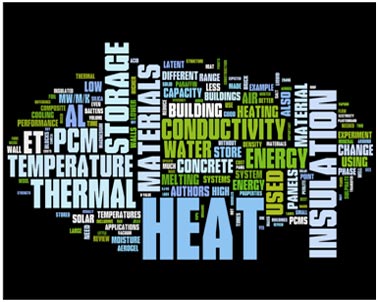
CAR Energy has unparalleled experience and understanding of energy and climate change.
Posts
Thermal storage and insulation
Thousands of publications have been written about thermal storage and insulation, even in just the past few years. Our literature search found more than 2000 sources on thermal storage published in the last four years, and more than 600 sources on thermal insulation.
The literature on thermal storage divides into three slices:
- phase-change materials – which absorb heat when they melt from solid to liquid, and can add thermal capacity without affecting the heating response time
- long-term heat storage – including inter-seasonal storage
- short-term applications, including cooling
Experiments using phase-change materials (PCM) in plasterboard, aimed at reducing overheating, have been found to cut peak temperatures by 2-4°C. They can double the heat stored in some constructions. Up to 25% PCM can safely be included in plasterboard, or up to 5% in concrete.
CAR and Eclipse’s work showed which PCMs are best for different situations, based on the performance and cost of PCMs. We also examined special concretes and salts that can provide long-term storage through a reversible chemical reaction, such as dehydration and rehydration.
We found that the work on insulation is more focused around materials, and we scrutinised work on four sorts of materials:
- natural insulation materials – e.g. mineral wool, cork, cellulose
- new insulation materials – e.g. expanded polystyrene, polyeurethane, or aerogel
- vacuum-insulated panels
- multi-foils
Our work showed that natural insulation materials perform at least 10 times better than brick or stone. New insulation materials perform at least 20 times better than brick or stone, while vacuum insulated panels are better still, at least 60 times better than brick or stone. However, aerogel (the best-performing new insulation material), and vacuum-insulated panels, are too expensive for mainstream construction.
CAR and Eclipse’s Expert Panel Meeting brought 21 experts together. It identified new insulation materials as likely to make the biggest contribution to meeting climate change objectives over the next 5 to 10 years. But the experts said these materials face many barriers that may prevent them from doing so, especially since there are few incentives encouraging take-up.
Read the full reports:
Insulation and thermal storage materials pre-publication draft.pdf
Insulation and thermal storage materials expert panel meeting pre-publication draft.pdf
